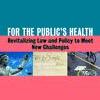
Clarion Calls for Healthier Approach
An Institute of Medicine report urges all levels of U.S. government to adopt a structured approach to consider the health effects of any major legislation or regulation, while a CDC study found only 10 percent of U.S. high school students meet Healthy People 2020 physical activity goals.
A CDC paper summarizing self-reported physical activity by U.S. high school students in 2010 suggests the government's Healthy People 2020 goals are more distant than ever: Just one in 10 students met the HP 2020 objectives for both aerobic and muscle-strengthening activities, CDC authors conclude in their analysis, which was published in the June 17 MMWR. On June 21, by coincidence, the Institute of Medicine published a report saying all levels of U.S. government should adopt a structured approach to consider the health effects of every major legislation or regulation, and federal and state policymakers should examine and revise public health laws so they adequately address current health challenges. Sponsored by the Robert Wood Johnson Foundation, it is the second in a series of three reports on public health strategies to improve the nation's overall health.
"The law has been an essential factor for improving the public's health through policies such as decreasing tobacco use, increasing road safety, and ensuring the greater healthfulness of our food and water. Our report recommends several actions that will ensure that federal, state, and local public health agencies make full use of a broad array of proven legal tools that can improve population health," said Marthe Gold, chair of the Board on Population Health and Public Health Practice, which wrote the report, and Arthur C. Logan professor and chair of Community Health and Social Medicine at the Sophie Davis School of Biomedical Education, City College of New York.
The report notes that policies and regulations beyond the health sector can have a significant impact on people's health, citing agricultural subsidies that influence the availability and affordability of certain foods, zoning policies that create green space, and education policies. It says public health laws should be revised so they give health agencies the authority to address concerns such as obesity, chronic diseases, injuries, substance abuse, immunization registries, and surveillance systems to detect bioterrorist attacks or disease outbreaks.
Besides Gold, the board's members include Dr. Steven M. Teutsch, chief science officer for Los Angeles County Public Health; Dr. Joyce D. Essien, director of the Center for Public Health Practice at Emory University's Rollins School of Public Health; Mary Mincer Hansen, Ph.D., RN, associate professor in the M.P.H. Program and Global Health Department at Des Moines University; and Dr. Martin Jose Sepulveda, vice president for Integrated Health Services at IBM Corp.
To subscribe to MMWR, visit this website.